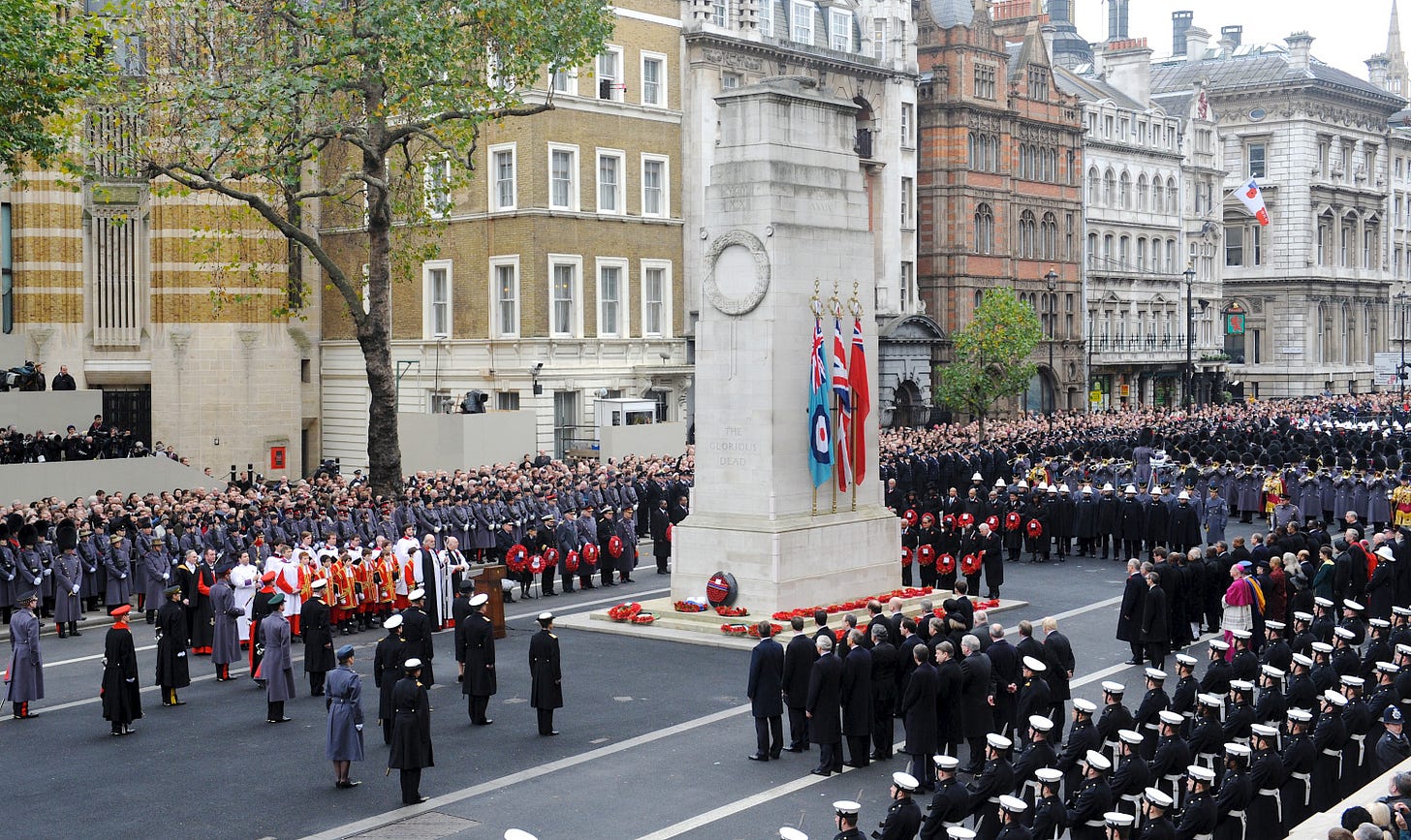We do more than Remembrance at church on Sunday
We must be careful of conflating the war dead and Christ's sacrifice, writes George Pitcher. But one helps us understand the other.
I stood before a rood screen with a vicar in a south London church some years ago and he remarked simply: “I don’t like it.” It wasn’t a comment on the artistic merits of the structure; his was an ecclesiological and theological point.
Rood screens – so called, incidentally, from the Anglo-Saxon word rood, meaning cross – have divided many churches between the sacred chancel and the more secular nave since the late-medieval period. They have also separated clergy and laity in more argumentative ways. Some like them, others despise them.
The mid-20th-century monster we were looking at was typical: Surmounted by a crucifix (Christ on the cross) and flanked by saints, in this case the Blessed Virgin and young St John. So far, so sacramental. But the rest of the screen was (and is still) a war memorial, with the names of the war dead of the parish and the words from St John’s gospel that are widely used on Remembrance Sunday: “Greater love has no man than this, that he lay down his life for his friends.”
“Our glorious dead”
This was the cause of my friend’s distaste, because in his view it conflated the self-sacrifice of soldiers in war with the atonement of Jesus Christ. I understand his point. To give your life for your country’s freedom as a self-sacrificial act of patriotism may be described as glorious – as in the words “our glorious dead” on thousands of war memorials – but it’s of a different order and purpose to the son of God dying on the cross in a “ perfect… satisfaction for the sins of the whole world”. Among those sins, after all, would be waging war.
The problem with conflating human and divine self-sacrifice is, at one level, simply one of scale. The “hands that flung stars into space”, of Graham Kendrick’s song, are the hands that surrender to nails on the cross. There is clearly something beyond the human going on here. And 20th-century Christology, the search for the personhood of Jesus Christ, has wrestled with that.
Anyone who has watched Professor Brian Cox’s BBC series Universe will have been intimidated by the sheer scale of creation. Humbled is too inadequate a verb in the face of galaxies billions of light years away. And yet the connection with humanity is arguably exactly where the miracles of Christology are at their most potent.
Mind of God
For the Jesuit scholar Pierre Teilhard de Chardin, who died in 1955, the science of the universe and the place of the human being within it are entirely consistent with a Christian faith. Teilhard sees in the increasing complexity of evolution – from particles to atoms to molecules to living cells to consciousness – a revelation of the mind of God.
Edward Schillebeeckx, a Belgian theologian and not a character in Douglas Adams’s Hitchhiker’s Guide to the Galaxy, endeavoured to see how the presence of God actually worked in the flesh-and-blood incarnation of the historical Jesus. His conclusion is in part that it’s impossible to be fully human without bringing “God’s existence into the world.”
That accords with the German Jesuit Karl Rahner, who holds that in Christ the spiritual dynamic of the human being “reaches out” to the infinite God who has prepared this point of entry into the world – what Rahner calls the “divinisation” of the world.
These Christologies suggest a far more intimate relationship between historical humanity and timeless divinity. In short, the “memory” of human history and the divine eternity are intertwined rather than contradictory. It follows that remembrance is something that has a stake in both the temporal and the eternal.
“Do this in remembrance of me”
In the act of the Eucharist we commemorate the Christ’s last supper with his friends, when he takes the bread and wine of the Jewish Passover meal and gives them to those friends (and by extension to us) as his body and blood and says: “Do this in remembrance of me.” But this isn’t simply (as if it could be) an act of memory. So while it is in small part commemorative, it is far from just a simple act of recollection of that event in history.
We gather as members of the Body of Christ (arms and legs and fingers and toes), putting that body back together again, to make it alive in the world. We are not remembering that historical body, so much as re-membering the Body to be present in the world, in the now. That more than touches on the doctrine of the Christ’s “real presence” in the Eucharist.
So there is something similar going on with Remembrance Sunday. We’re not just recalling to mind those who died in war. We are re-membering them – bringing them into the present with us, committing our bodies to their virtues, so that their courage and sacrifice is alive today, is living in us.
As we gather to cherish our freedom and peace on Sunday and to honour our war dead, we will be hearing the lines of Laurence Binyon: “At the going down of the sun and in the morning we will remember them”. But in bringing their spirit of selflessness and sacrifice alive once more, we’re performing a drama, a ritual act of re-creation, in which we will re-member them as well.
George Pitcher is a visiting fellow at the LSE and an Anglican priest




